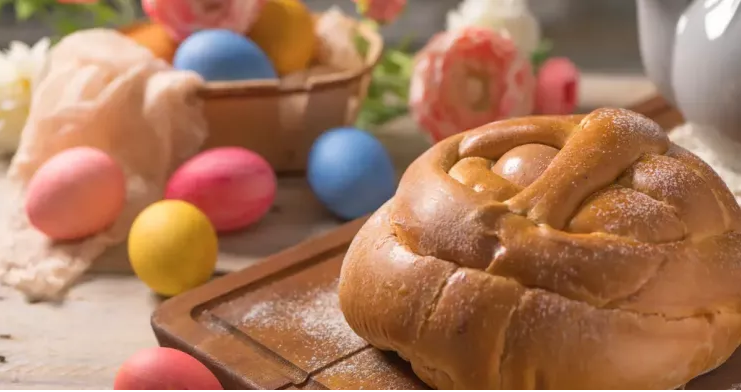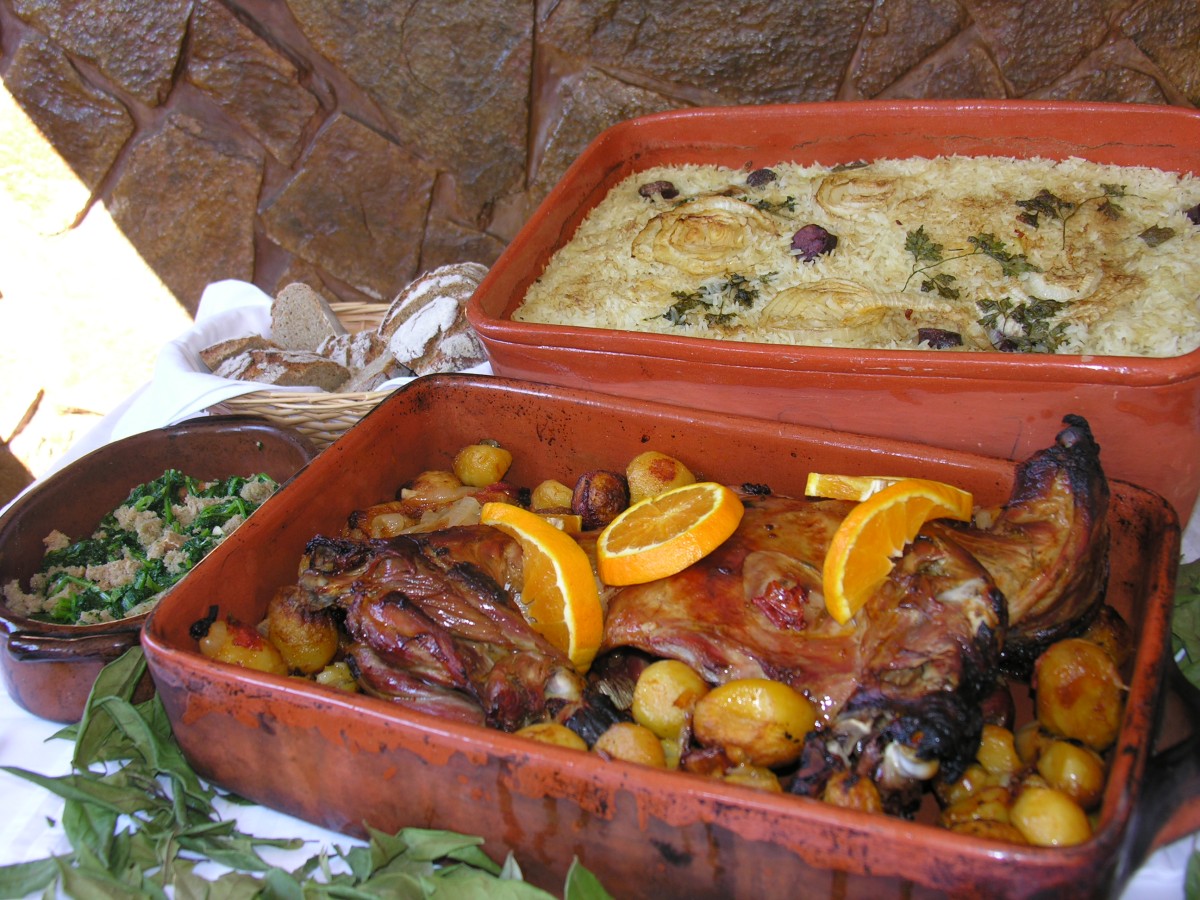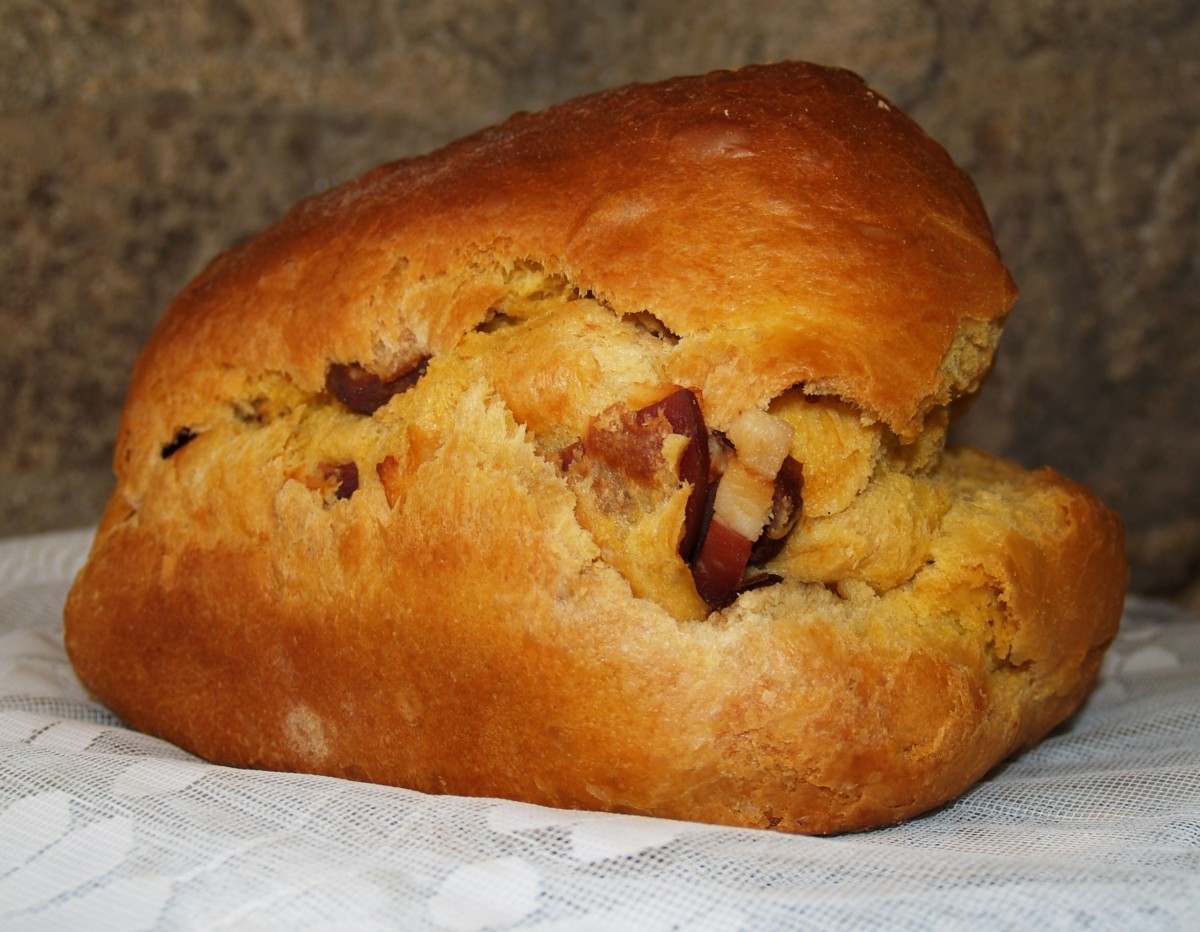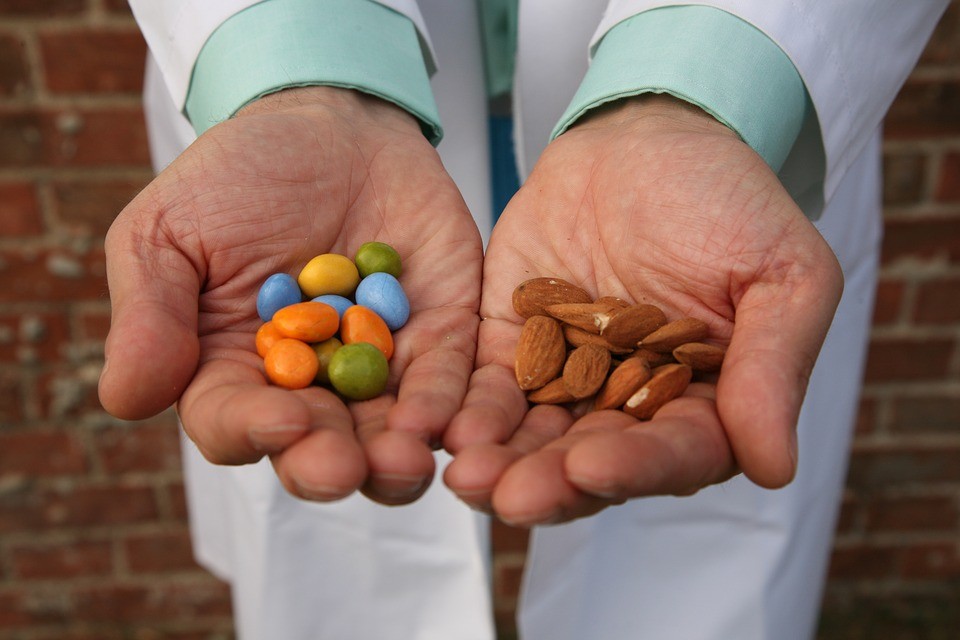
As Easter approaches once more, it brings forth a delightful season in Portugal where families come together to feast and rejoice. Semana Santa 2025 in Portugal offers the opportunity for full enjoyment, and whether you find yourself within Portugal or not, we highly suggest indulging in these delightful Portuguese Easter treats. Now is the perfect time to explore the delectable traditional dishes that characterise the Easter season in Portugal.
Portuguese Easter food traditions are different across the entire country and dishes vary from region to region, but all Easter food in Portugal has something in common: abundance. Following the winter season, Easter signifies a time to relish in a lavish feast, symbolising the end of Lent (due to the fact that Portugal is traditionally a Roman Catholic country). Dinner tables fill up with everything from sausages, liquor and lamb to the traditional bola and many delicious sweet dishes and Easter desserts.
Make the most of Portugal's Easter celebrations in 2025, get into the Easter spirit and find out more about the traditional Portuguese Easter food you must try on our Easter food tour around Portugal!
Portuguese Easter food traditions
Portuguese Easter food traditions are a delightful mix of rich flavours, local ingredients, and centuries-old customs. Each region of Portugal has its own unique way of celebrating this important holiday, with food playing a central role in the festivities. From hearty meals to sweet treats, the diversity of Portuguese Easter cuisine reflects the country's rich cultural heritage. In this section, we’ll explore the traditional dishes enjoyed across the different regions of Portugal during Easter, each offering a distinct taste of local flavours and traditions.
Minho

In the Minho region of Portugal, made up of Braga and Viana do Castelo in the north of the country, Easter celebrations involve the Compasso, a group led by the local priest, who goes from house to house carrying the Holy Cross and offering blessings. For residents, it's customary to prepare traditional dishes in anticipation of the priest's arrival: bolas recheadas (a sort of salty pastry filled with meat and sausages), roasted lamb and the traditional folar or pão-doce, a sweet yellow bread are amongst the most common.
For a true Portuguese experience this Easter that you can also easily make at home, you should also try broinhas (small sweet bread like cakes prepared with pumpkin or potato and stuffed with raisins), pão-de-ló (one of the most famous Portuguese cakes made with egg yolks, whole eggs, flour and sugar), or bolo de Margaride as it is known in Felgueiras and borrachos (fried pastries made with eggs, sugar, breadcrumbs and cinnamon in Valença do Minho).
Trás-os-Montes

In this region, Easter is also associated with the consumption of folar, similar to the one previously mentioned, albeit with some variations. In Trás-os-Montes, folar is a savoury delicacy that contains a mixture of veal, chicken, rabbit, serrano ham, and Portuguese sausage known as salpicão. These delicious ingredients enrich the dough with their greasy fat. In some cities, folares are shaped to be big and round, like in Bragança ou Mirandela, and in places like Freixo de Espada à Cinta, they tend to be smaller and flatter.
Beiras
In Beiras, the folar is sweet and is prepared with cinnamon and fennel and decorated with eggs, either boiled or painted with colourful motifs. In Covilhã, apart from this sweet bread, you can also enjoy broinhas, olive oil cakes or empanadilhas da Páscoa, a half-moon shaped sweet treat, filled with walnuts or almonds.
It's worth noting that in this region, along with certain parts of Alentejo, it's customary to refrain from consuming meat until the "Enterro do Bacalhau," signalling the conclusion of Lent in the area. Following this event, meat becomes prominent in traditional Easter cuisine in Portugal, with lamb, chicken, or pork assuming central roles.
Alentejo
In the Alentejo region of Portugal, lamb is the star of the show and basically every single part of the animal is used to make some spectacular Easter dishes. Tripe is used to prepare sarapatel and even the brains of the lamb are cooked and are considered a delicacy, certainly not for the faint-hearted. You can also find queijadas (cheese-based pastries), bolos fintos and like in the majority of Portugal, folar.
In Elvas you can find the traditional doce pascal (“Easter’s sweet”) that is shaped like animals that range from lizards to lambs, as well as little chicks and doves which are then covered with white almonds and boiled eggs. In Castelo de Vide you can also find this sweet treat but, instead of animals, it is usually shaped like a double heart.
The Algarve
In the Algarve, you'll discover an extensive array of the traditional dishes we've previously mentioned, but one stands out with a delightful twist that's worth sampling. In the southernmost region of the country, you'll encounter a distinct variation of folar known as "folar de folhas," offering a sweet rendition of this Portuguese Easter delight. The folar in the Algarve features cinnamon, brown sugar, lemon, and butter as its primary ingredients.
Portuguese Easter menu: a feast of tradition and flavour
A typical Portuguese Easter menu is a delightful combination of traditional dishes, each reflecting the country’s rich culinary heritage. Here's a look at some of the key elements you might find at a traditional Portuguese Easter dinner, including some of the Portuguese Easter food mentioned above and more:
Starters:
- Bacalhau à Brás (salted cod with eggs, potatoes, and onions)
- Chouriço (Portuguese sausage) served with bread and olives
- Pão com Chouriço (bread stuffed with chorizo)
Main courses:
- Cordeiro Assado (roast lamb) seasoned with herbs and garlic
- Cabrito Assado (roast goat), especially in the north of Portugal
- Bacalhau com Todos (salted cod with potatoes, eggs, and vegetables)
Side dishes:
- Arroz de Feijão (rice with beans)
Traditional Portuguese Easter desserts:
- Folar (traditional Easter bread, often with boiled eggs, sweet and savoury variations)
- Ovos Moles (sweet egg-based pastries from Aveiro)
- Pão-de-Ló (light, fluffy sponge cake)
- Amêndoas de Páscoa (sugar-coated almonds, a popular Easter treat)
- Tarte de Laranja (orange tart, often served during festive occasions)
Do they have Easter eggs in Portugal?

In Portugal, there are several traditional Easter dishes that are famous throughout the country, but each one possesses a unique flair that is contributed by different cities, regions, and even individual families. But what about chocolate? But does Portugal have Easter eggs? Besides all of the customary sweet and savoury meals we've mentioned, there are two other customary Easter elements that are popular in Portugal: chocolate and almonds.
During the Easter period, grandparents, godparents, and parents shower their children with chocolate eggs of various sizes, chocolate figures like the Easter Bunny, and almonds. As per tradition, godparents must also gift almonds to their godchildren as Easter presents, and they can be found in any form imaginable: plain, sugar-coated, chocolate-coated, stuffed with chocolate, and so on.
Portuguese Easter traditions
Portuguese Easter traditions are rich in cultural and religious significance, combining vibrant celebrations with deep-rooted customs. The festivities often begin on Good Friday with processions and religious services, particularly the Procissão do Senhor Morto (Procession of the Dead Christ). On Easter Sunday, families gather for a festive meal, featuring traditional dishes like cabrito (roast goat) and folar, a sweet bread symbolizing resurrection. Many regions also hold lively fairs and folk dances, celebrating the joy of Easter. The holiday is a time for communal feasts, prayer, and honouring age-old traditions passed down through generations.
